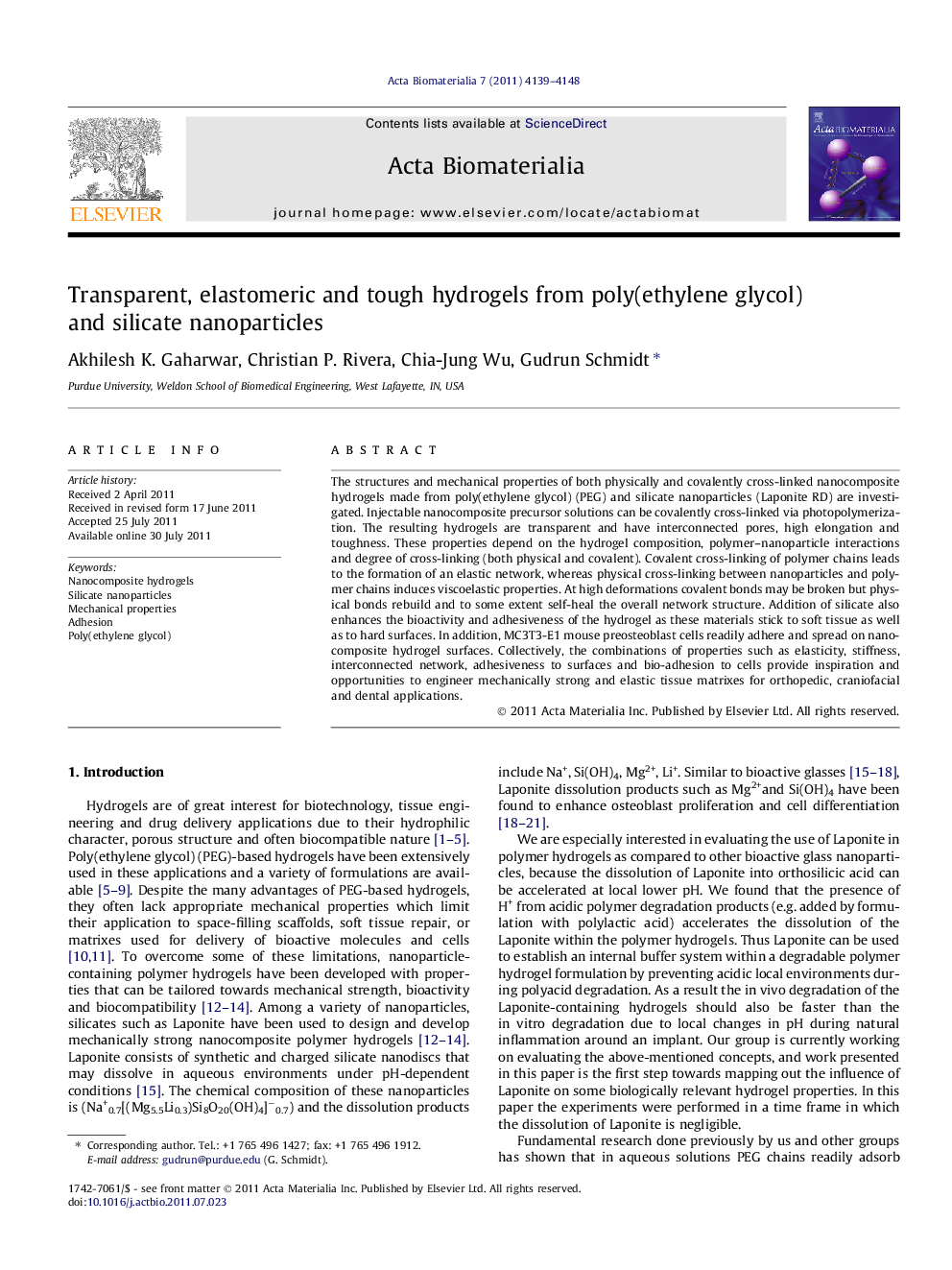| Article ID | Journal | Published Year | Pages | File Type |
|---|---|---|---|---|
| 670 | Acta Biomaterialia | 2011 | 10 Pages |
The structures and mechanical properties of both physically and covalently cross-linked nanocomposite hydrogels made from poly(ethylene glycol) (PEG) and silicate nanoparticles (Laponite RD) are investigated. Injectable nanocomposite precursor solutions can be covalently cross-linked via photopolymerization. The resulting hydrogels are transparent and have interconnected pores, high elongation and toughness. These properties depend on the hydrogel composition, polymer–nanoparticle interactions and degree of cross-linking (both physical and covalent). Covalent cross-linking of polymer chains leads to the formation of an elastic network, whereas physical cross-linking between nanoparticles and polymer chains induces viscoelastic properties. At high deformations covalent bonds may be broken but physical bonds rebuild and to some extent self-heal the overall network structure. Addition of silicate also enhances the bioactivity and adhesiveness of the hydrogel as these materials stick to soft tissue as well as to hard surfaces. In addition, MC3T3-E1 mouse preosteoblast cells readily adhere and spread on nanocomposite hydrogel surfaces. Collectively, the combinations of properties such as elasticity, stiffness, interconnected network, adhesiveness to surfaces and bio-adhesion to cells provide inspiration and opportunities to engineer mechanically strong and elastic tissue matrixes for orthopedic, craniofacial and dental applications.
Graphical abstractThe structures and mechanical properties of both physically and covalently cross-linked nanocomposite hydrogels made from poly (ethylene glycol) (PEG), and silicate nanoparticles (Laponite RD) are investigated. The property combinations that included elasticity, stiffness, interconnected network, adhesiveness to surfaces, and bio-adhesion to cells provide inspiration and opportunities to engineer mechanically strong and elastic tissue matrixes from nanocomposite hydrogels for biomedical applications.Figure optionsDownload full-size imageDownload high-quality image (66 K)Download as PowerPoint slide
